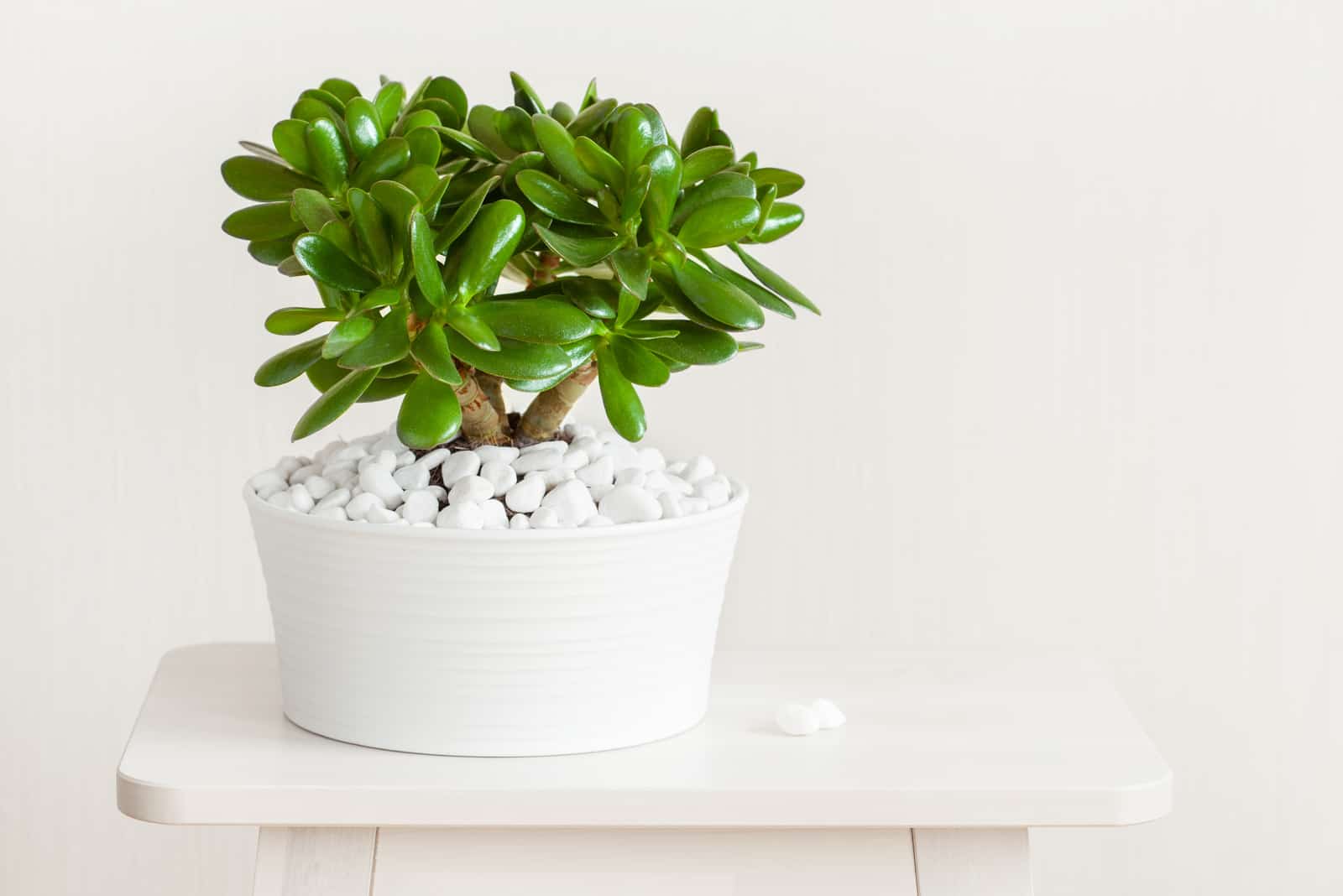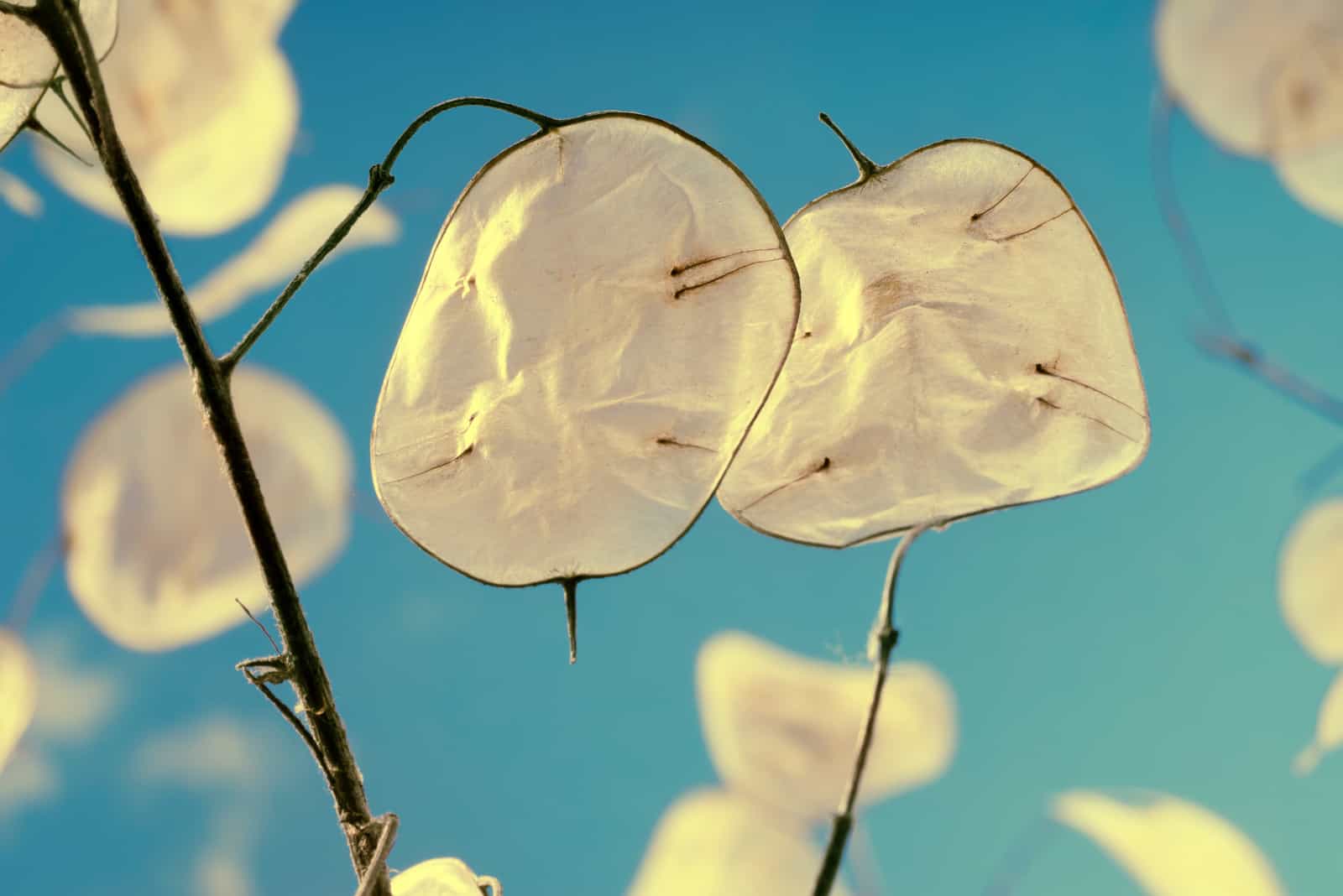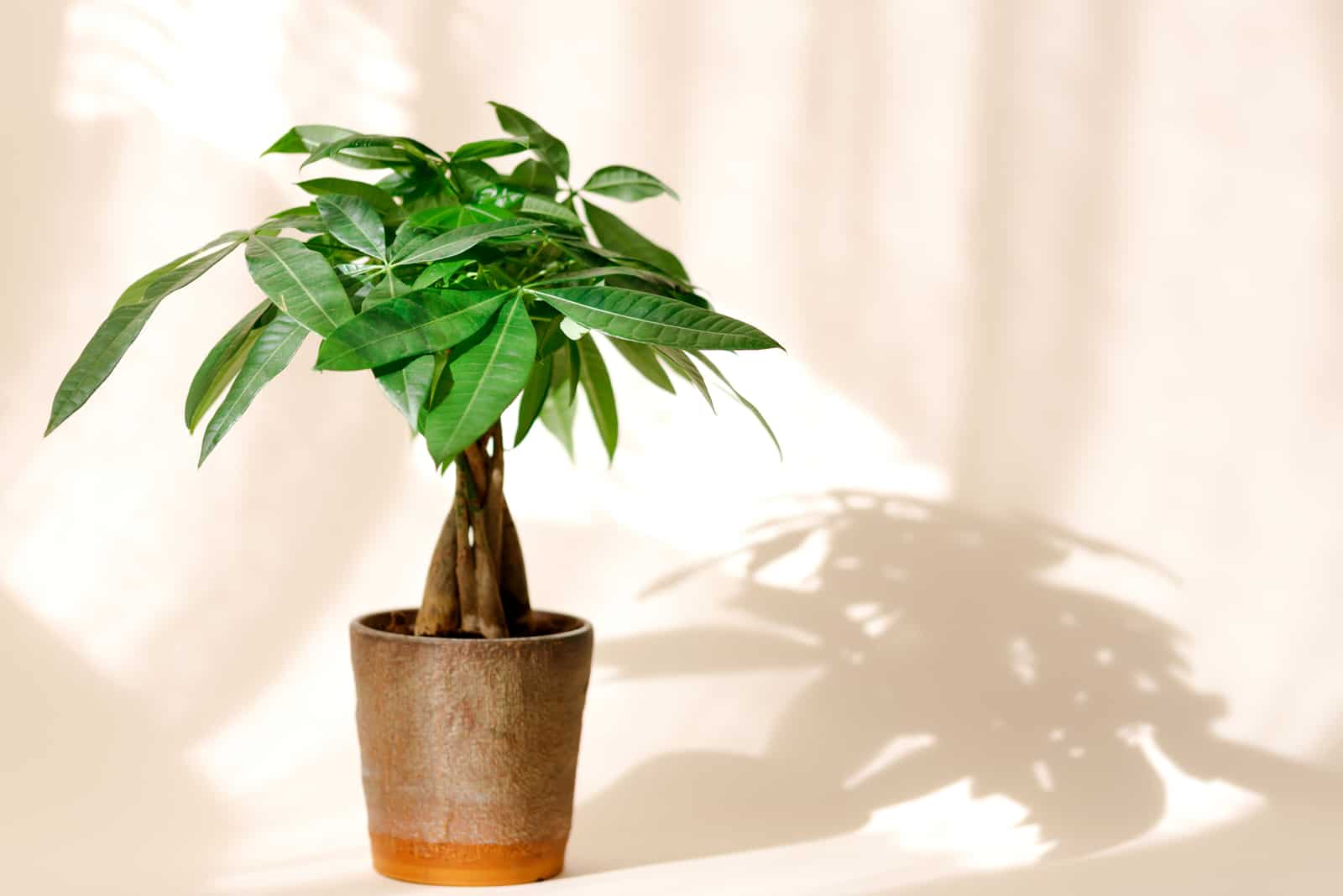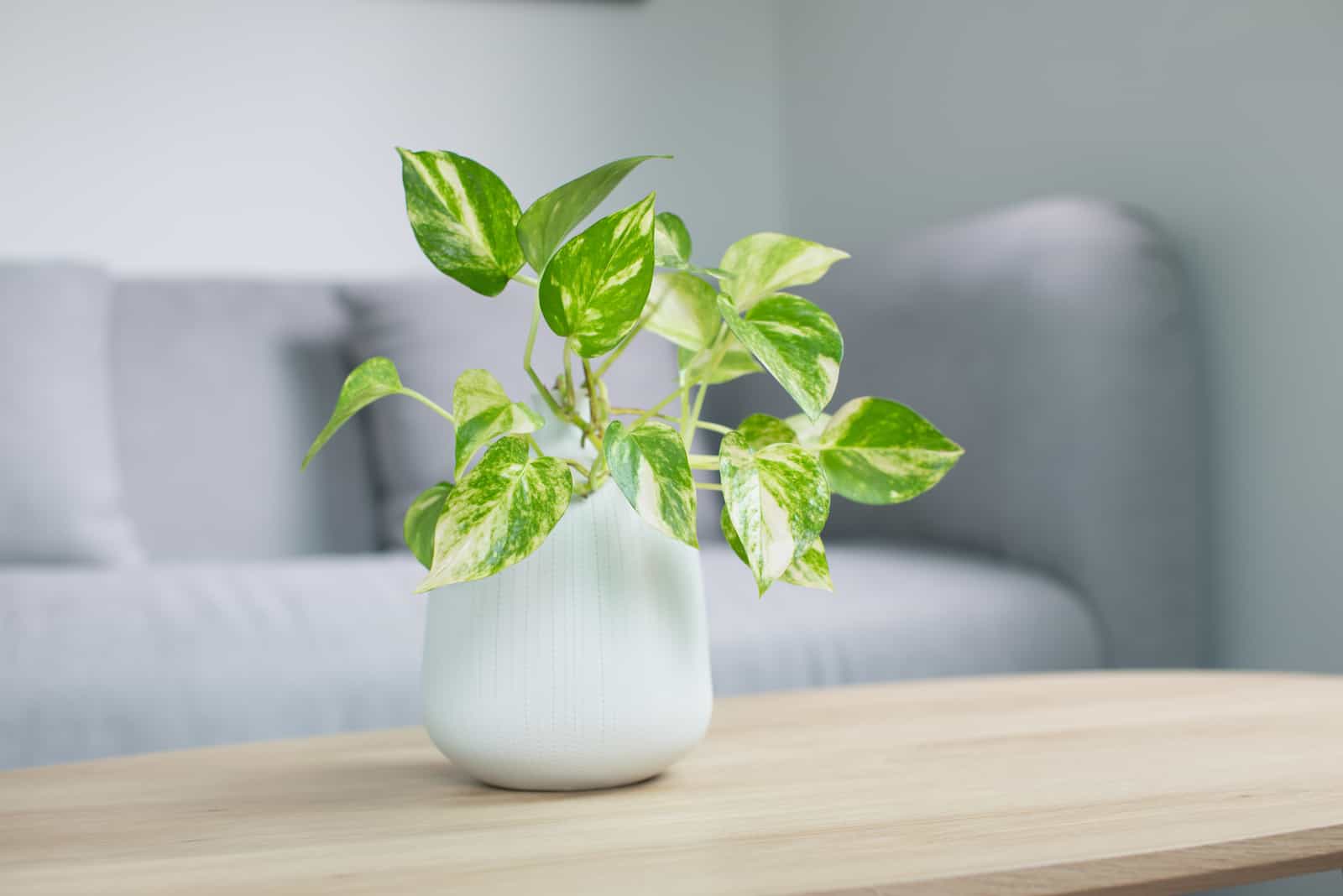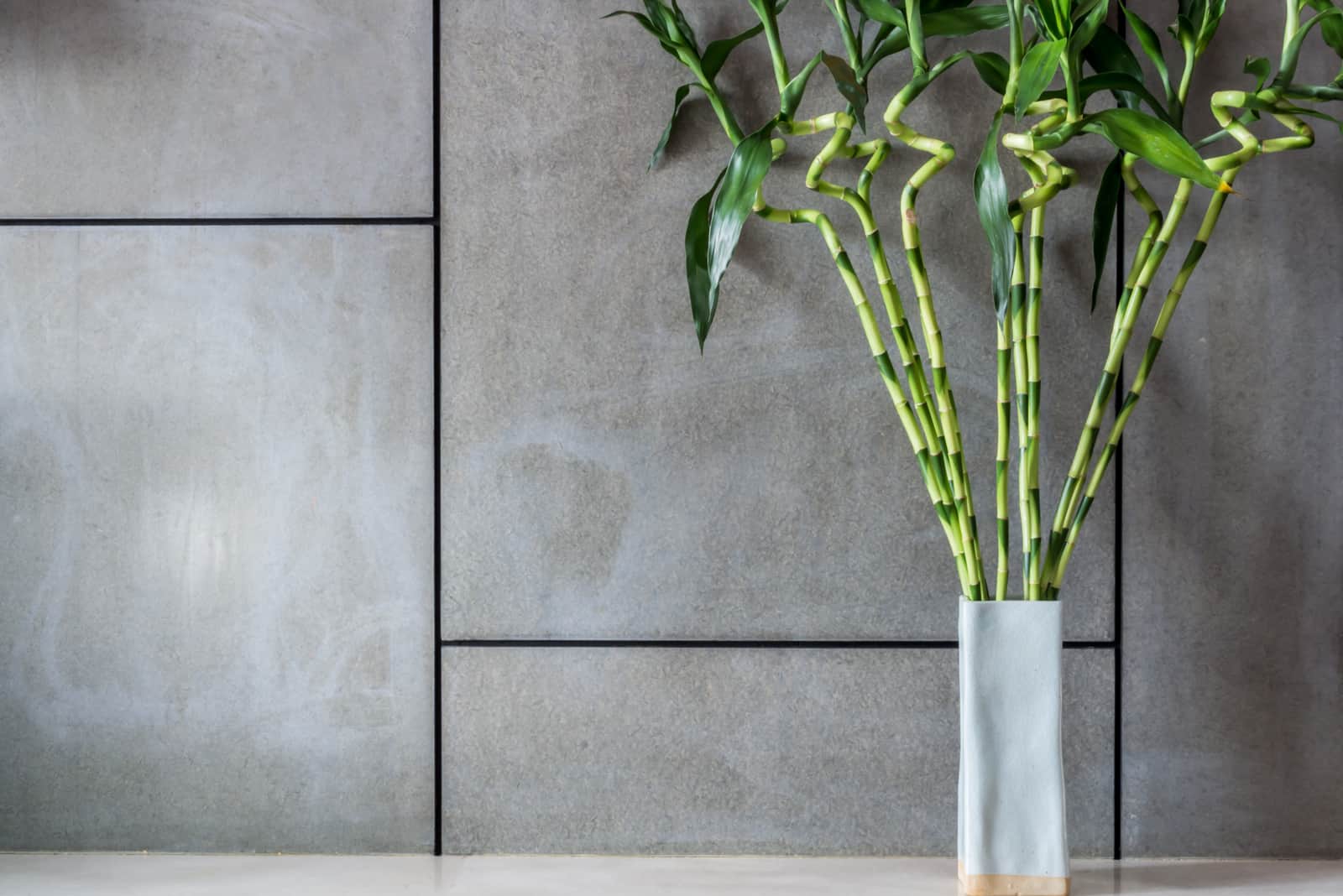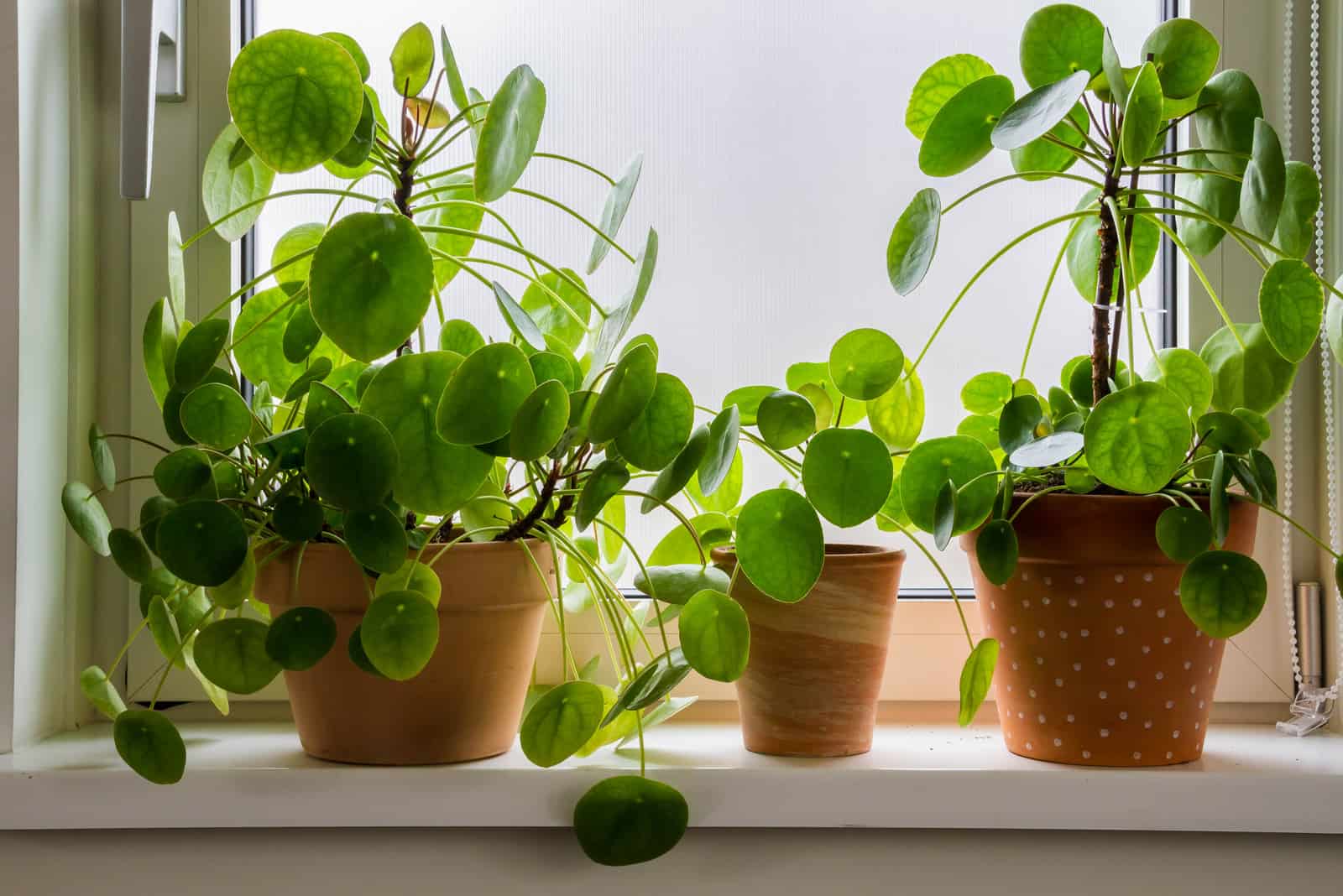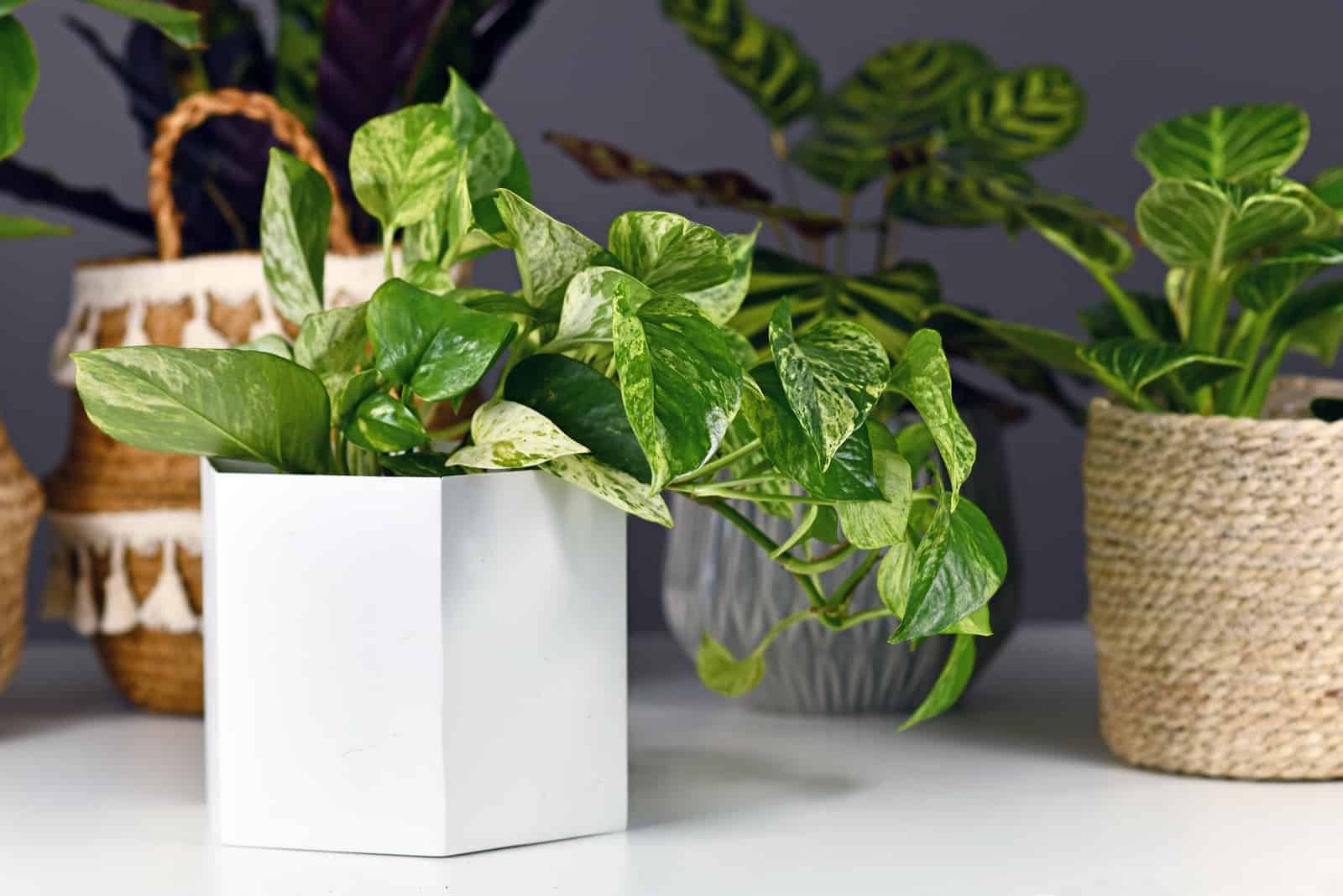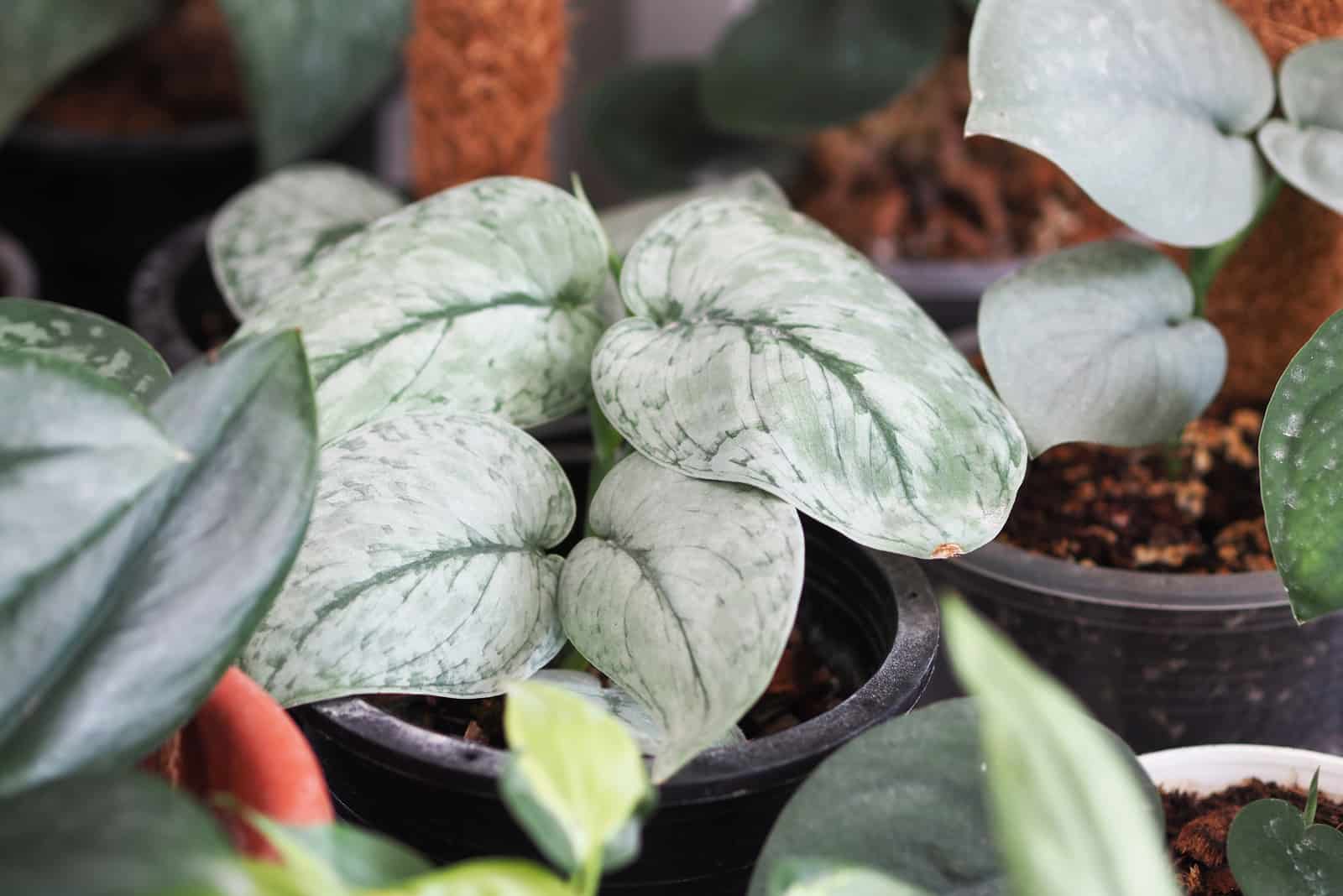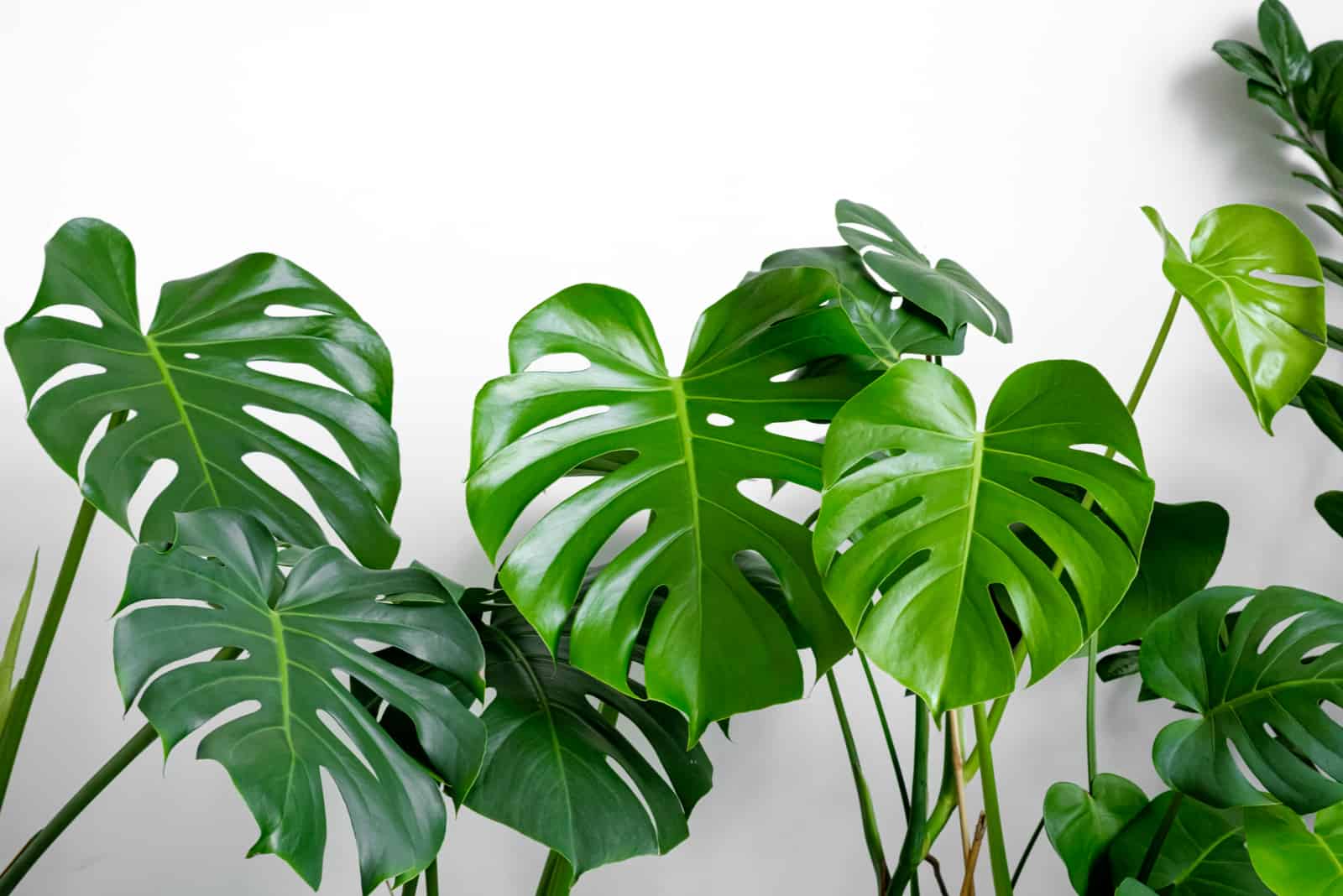Positive Bloom is an Amazon Associate and we earn from qualifying purchases through these links at no extra cost to you.
If decorating your living space and bringing wealth and success at the same time sounds like a nice idea to you, then you are in the right place! This article will teach you everything you need to know about ten different types of money plant, so let’s get started.
Why are they called “money plants”?
The main reason these plants are called money plants is because their leaves are plump and round, and they look just like coins! It is also believed that money plants bring good luck and financial wealth.
10 Different Types of Money Plant
1. Lunaria
The Lunaria is an outdoor flowering plant which belongs to the Brassucacea or Mustard family. Their flowers, on the other hand, bear no resemblance to mustard whatsoever. They grow in beautiful pink and purple colors and are usually clustered together. This plant is a biennial plant, meaning it grows one year and blossoms the next, usually from early to midsummer. By the end of the summer, it produces flat seed pods.
The latin name Lunaria means “moon-like”, and refers to its round and silvery seed pods. But you know what else is round and silvery, right? These seed pods look like coins, and that is why they say growing a Lunaria brings money.
Other names used for this type of money plant are the Silver Dollar plant and Honesty, and what better way is there to try your luck than by growing Honesty in your backyard?
How do you take care of a Lunaria money plant?
The Lunaria does not require much work and attention. Spread the seeds, cover them with a little layer of soil, and water them thoroughly. They enjoy direct sun, but will also thrive in partial shade. They have no preference when it comes to soil type.
Can I grow a Lunaria indoors?
Yes. Lunaria can grow indoors as long as the seeds are planted seven weeks before the last frost is expected and they are kept at a warm temperature.
2. Money tree (Pachira aquatica).
Money trees can grow really tall in their natural habitat of South America, and they are not braided, which makes them different compared to the houseplant Pachira aquatica. The Pachira aquatica can fit in a small pot and their trunks are braided. However, there is more to it than this. Not only are they said to bring you fortune and grow quickly, this plant can actually improve air quality by eliminating harmful toxins.
Don’t spend money on air purifiers, just buy a money tree!
The Pachira aquatica has dark green leaves usually consisting of five leaflets, which are believed to represent the energy of the five elements: water, air, fire, earth, and wind. These five elements are highly valued in Feng Shui.
Is a money tree easy to care for?
The money tree requires bright light, and you should rotate it once in a while so it does not bend to one side. This type of money plant can be watered once a week, but be sure to pour out the excess water and not to let the roots sit in water because it might lead to root rot.
Where should you place a money tree?
As it does not like direct sunlight, the best place to put a money tree is near windows or in the south-east corner of your room because it is believed that it attracts luck and prosperity when placed in this direction.
3. Golden Pothos (Epipremnum aureum)
Commonly known as Devil’s ivy, the Golden Pothos is a low-maintenance flowering plant that has a distinctive yellow color pattern on its sharp leaves. It is usually grown as a hanging plant to make a room more lively. If you need some luck, you should buy yourself a trailing Pothos plant because it symbolizes prosperity and good luck.
How do you care for a Pothos Epipremnum aureum?
This golden money plant should be kept in indirect light because it doesn’t tolerate strong sunlight. You should water it once every two weeks to let the soil dry between waterings, which makes it a perfect plant if you always forget to water your plants (you are not the only one trust me, I even managed to dry out my cactus…)
4. Jade plant (Crassula ovata)
This lucky plant is a succulent plant that can live for a very long time. It is native to South Africa, and is primarily used as a decorative indoor plant because it grows exquisite pink and white flowers. It is also very small, so you can easily put it on a table to create a lively workspace.
It is also one of the tallest succulent plants perfect for every garden!
How do you care for a jade plant Crassula ovata?
When it comes to plant care, the Crassula ovata thrives in moderate temperatures and indirect light. The same goes for watering: water moderately as over watering can lead to root rot. You should always let the soil dry before watering it again.
5. Swiss Cheese Money Plant (Monstera adansonii)
This one is great for a beginner plant enthusiast. The Monstera adansonii is native to Central and South America and is usually cultivated as an indoor decorative plant. This is because it grows magnificent, dark green leaves which develop patches as time goes by. These patches on the leaves look a lot like Swiss cheese, hence the name Swiss Cheese money plant! This popular houseplant is said to attract money and positive energy.
How do you care for a Swiss Cheese plant?
Keep it in indirect sunlight and away from pets as its leaves are toxic. It does not require a watering schedule, just water it when the soil is completely dry and you are good to go.
However, don’t leave your plant without water for too long as it might suffer from underwatering.
6. Lucky Bamboo (Dracaena sanderiana)
Lucky bamboo plants are said to bring good fortune and luck to their owners, particularly when they are given as gifts. Most people think of lucky bamboo as a popular houseplant, however it’s not actually bamboo. It’s named dracaena or Dracaena sanderiana because the stalks or stems look like bamboo.
Is lucky bamboo really lucky?
According to Vastu Shastra, they are said to bring wealth and fortune, especially if they are kept in an office.
How do you take care of a lucky bamboo plant?
This type of money plant can grow in both water and soil. If you choose water, you should clean the container every few months and provide it with filtered water every week. But if you choose soil, it should be kept damp and have proper drainage.
7. Chinese money plant (Pilea peperomioides)
Coin plant, pancake plant, Pilea peperomioides, or Chinese money plant – whatever you want to call it, it is an eye-catching little plant that has lovely, round green leaves that look just like coins. Seriously, it’s like your pocket money is growing on a tree! It has charmed many people and is becoming quite popular on social media lately. Everyone shares their cute indoor jungles online, and Pilea peperomioides is often a proud member of it!
How do you care for a Pilea Chinese money plant?
This lucky plant prefers bright light, but keep it out of direct sunlight. You should water it weekly. Before watering, check if the soil is completely dry as this plant does not enjoy having soggy soil.
Where should I put my Chinese money plant?
You should place your Chinese money plant in a location where it can get plenty of indirect light and warmth throughout the day, allowing its leaves to absorb the sun’s rays and perform photosynthesis.
8. Marble Queen Money Plant (Epipremnum aureum ‘Marble Queen’)
Her highness, the Marble Queen, is probably the most exquisite type of money plant. Its variegated leaves with white and creamy patterns make the plant look like its growing marbles instead of leaves.
The marble queen pothos, like other common types of pothos, grows well indoors and can adapt to a variety of growth environments, making it adaptable and ideal for new plant enthusiasts. Keep it away from pets though, as it’s mildly toxic.
Make sure that you buy the right plant because snow queen and marble queen pothos are astonishingly similar.
How do you take care of a Marble Queen money plant?
This little queen doesn’t need much water and likes to be dry. However, when you water it, make sure that the water has soaked the roots before pouring the excess water out of the pot.
9. Silver Money plant (Scindapsus pictus)
Also known as Satin Pothos, this plant is a Southeast Asian native with a reputation for being one of the most easy-to-care-for houseplants.
It’s notable for its heart-shaped matte leaves with shimmering gray patterns, and trailing tendrils that grow rapidly.
How do you care for Pictus Scindapsus?
The Satin pothos doesn’t enjoy being in direct sunlight, so it’s better not to put them near windows. Its leaves lose their variegation and burn when exposed to full direct sunlight. You can put pothos plants in hanging pots near windows because they look their best when falling from containers, but keep the curtains closed if the window receives direct sunlight.
10. Split Leaf Money Plant (Monstera deliciosa)
How do you take care of a Monstera split leaf?
The split-leaf philodendron got its name, you guessed it, because of its unique split leaves. As the plant grows older, its leaves get more split, making it look even prettier. When grown indoors, the Monstera deliciosa can reach a height of 140cm, depending on the size of the pot.
Why do Monstera leaves split?
The theory is that Monstera leaves have splits in them to allow light to pass through and reach the lower leaves. They are constantly growing and getting bigger, so in order to obtain the necessary nutrients, its leaves grow larger so as to absorb more light.
The Best Money Plants for Feng Shui
To capture the true essence of Feng Shui, and to bring abundance and luck into the home, the best option is a money plant. There are a variety of money plants used in Feng Shui, including the Jade plant, Pilea Peperomioides, and Pachira aquatica, which are the most popular.
It is believed that these unique plants bring good fortune and prosperity, but they also make your living room look much cooler! You can also make yourself a little wealth corner in your office to attract success, or in the bedroom to improve indoor air and help you sleep better.
You can follow this link to learn some trips and tricks about Feng Shui and money plants.
Are Money Plants Really Worth The Money?
In my opinion, yes. Not only do they make your home delightful, but it is also believed that all types of money plants can bring positive energy and wealth as well as improve your well-being. You won’t have to spend a lot of money buying one, but you might earn something from it!
You can find them on Amazon – I have recently bought one as a gift for my friend, it even comes with care guide!
[lasso id=”2959″ link_id=”1096″ ref=”amzn-hallmark-flowers-live-braided-money-tree-12-tall-in-white-round-ceramic-container-from-1-count”]
Until next time!
Like this post? Share or pin it for later!

